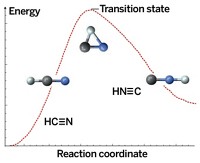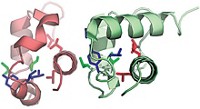Advertisement
Grab your lab coat. Let's get started
Welcome!
Welcome!
Create an account below to get 6 C&EN articles per month, receive newsletters and more - all free.
It seems this is your first time logging in online. Please enter the following information to continue.
As an ACS member you automatically get access to this site. All we need is few more details to create your reading experience.
Not you? Sign in with a different account.
Not you? Sign in with a different account.
ERROR 1
ERROR 1
ERROR 2
ERROR 2
ERROR 2
ERROR 2
ERROR 2
Password and Confirm password must match.
If you have an ACS member number, please enter it here so we can link this account to your membership. (optional)
ERROR 2
ACS values your privacy. By submitting your information, you are gaining access to C&EN and subscribing to our weekly newsletter. We use the information you provide to make your reading experience better, and we will never sell your data to third party members.
Analytical Chemistry
Faster route to NMR chemical shift data
April 23, 2007
| A version of this story appeared in
Volume 85, Issue 17
A new technique makes it easier and faster to determine a type of fundamental nuclear magnetic resonance spectroscopy value that is rich with information about molecules. Known as chemical shift anisotropy (CSA) tensors, these values previously have been difficult to obtain. CSA tensors measure variations in NMR chemical shifts that occur when a functional group in a protein or other compound changes orientation with respect to a fixed magnetic field. Chemists use CSA data to refine protein structures, elucidate enzyme mechanisms, and validate theoretical calculations of atomic properties. Traditionally, researchers could measure only one CSA tensor at a time, and recent advanced techniques boosted this to about 10 tensors per experiment. Now, Chad M. Rienstra and coworkers at the University of Illinois, Urbana-Champaign, have devised a way to obtain about 100 CSA tensors at a time (J. Am. Chem. Soc. 2007, 129, 5318). They report using the technique to determine about 95% of the CSA tensors in a small protein and have since achieved similar results with larger proteins.





Join the conversation
Contact the reporter
Submit a Letter to the Editor for publication
Engage with us on Twitter